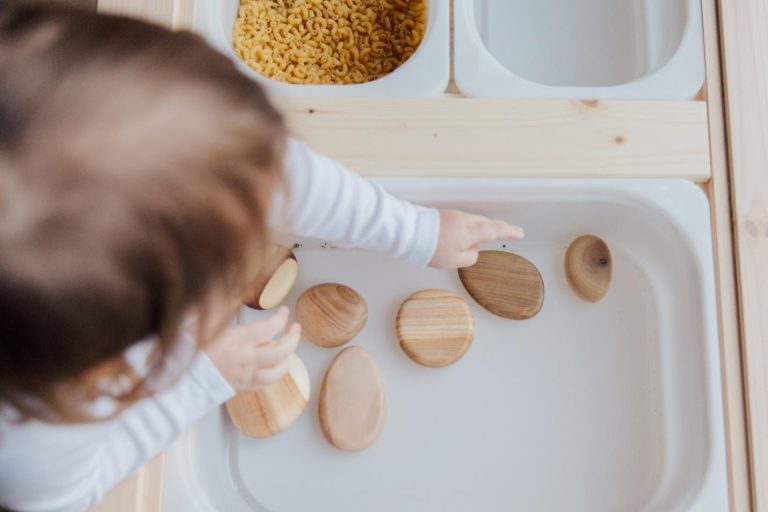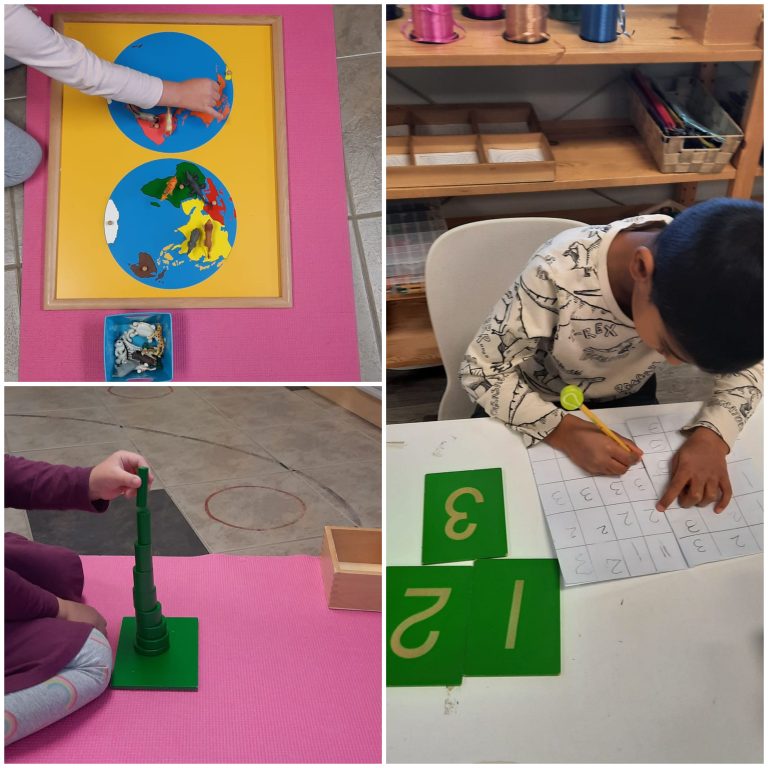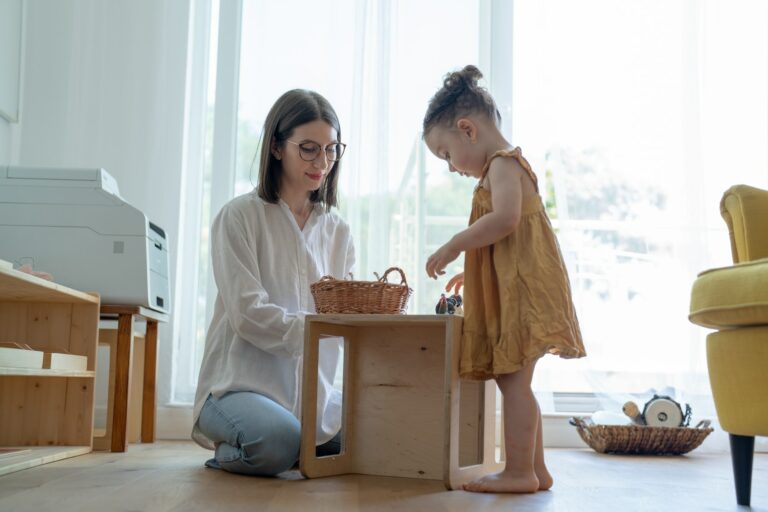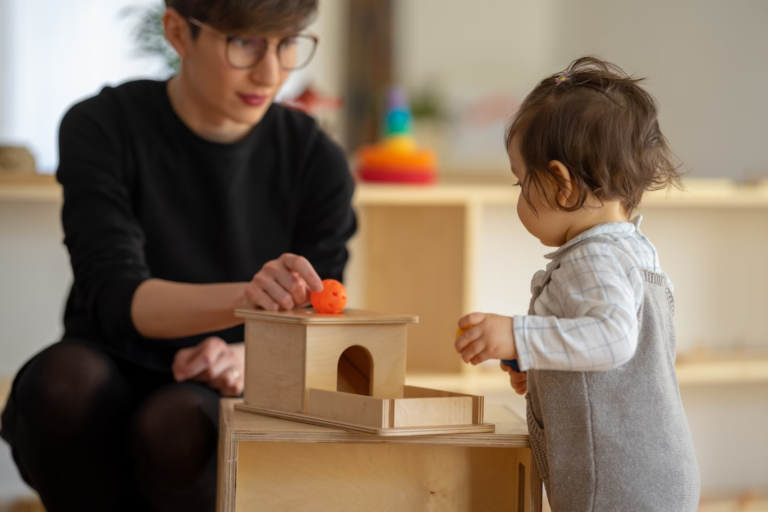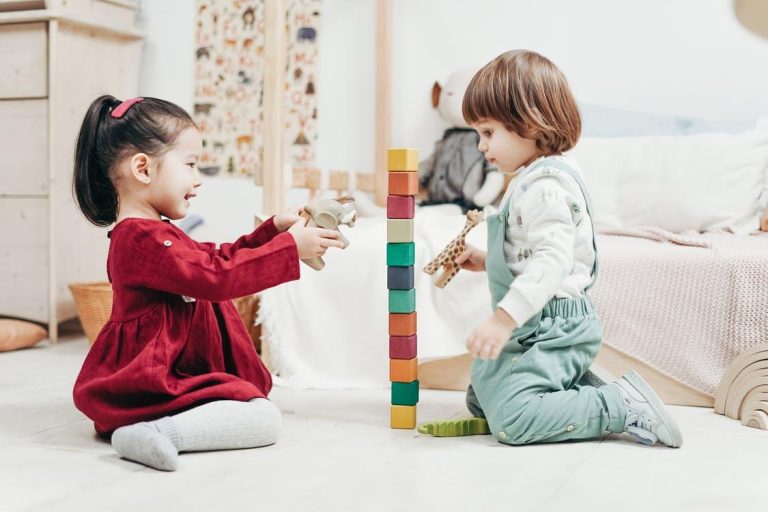Seeing a Child Through Their Eyes
Seeing the world through a child’s eyes doesn’t come naturally to most adults. With all the tasks and responsibilities, job duties, household chores, worries, and struggles, it’s difficult to truly stop and see the world as children perceive it.
Still, if parents and teachers taking a Montessori training course want to provide a supportive, nourishing environment where children can grow and develop unobstructed, they need to learn to observe the world and their children through the eyes of a child.
It’s a matter of understanding how children perceive, interpret, and interact with the world around them.
There’s magic in how children’s brains work, and we need to understand it if we’re to support our children’s physical, mental, and emotional development.
Everything is a learning opportunity and experience
You might not think of much when you see a child picking every colourful flower they see on their walk. You might not think it significant when a child takes their grandparent’s old, broken digital watch and starts pressing every button around its crown.
However, to that child, every item they interact with, new flower they find, and old broken watch they play with is a learning opportunity and a new experience.
Even simply going to the store when their parents are grocery shopping is a learning experience. They study the interactions between parents and strangers in the store, notice how the adults push the shopping cart, and learn how to behave when waiting in line by the cashier.
Everything is new and exciting, and they can’t wait to learn more.
That’s why parents and educators get a million questions “why”, “how”, and “what” – and that’s why it’s critical not to dismiss these questions and deny the children the opportunity to learn.
By helping the child embrace the opportunity to learn and gain new experiences, you’re fostering a growth mindset in them and helping them develop a deep-seated love for learning.
Children see new things every day
Most adults have a routine they stick to. They know what waits for them when they wake up in the morning. They know how long the commute to work will take, what they’ll need to do after they get home, and which new TV show they’ll put on in the evening.
For children, the world is an entirely different place. Even if their parents and educators have imposed a strict routine on them, they don’t know where the day will take them. Maybe they’ll see a bird they’ve never noticed before in the park, or there will be a new toy to play with in the classroom, or they’ll get to pet a stranger’s dog.
For children, every day is full of possibilities, excitement, and magic. There’s something even adults can learn from that.
Every new person is a potential friend
There is no such thing as too many friends in a child’s mind. Everyone, from a grandma in an elevator to the new child in the playground and the trucker on the road, is a potential new friend. That’s why you’ll often see young children waving and smiling at strangers, approaching them to ask something, and trying their hardest to find out as much there is to know about them as quickly as possible.
They know that every new friend they make can bring new possibilities – new ways to play, new toys to interact with, and new knowledge to master. So, they happily try to befriend just about anyone in their surroundings.
As opposed to this, most adults seem content to stick to their established social circles and avoid interacting with strangers whenever possible. How many times have you hoped that no one would sit next to you on the subway? That no one would interact with you in the grocery store?
If we want our children to establish positive relationships with those in their environment, it’s essential for us as adults to lead by example. It makes for a richer life – for you and the children.
New experiences give them a positive outlook
A positive outlook on life plays a big role in a child’s well-being. It helps them improve their self-esteem, encourages learning and exploring, and allows them to be true to themselves. Fortunately, most children easily develop a positive outlook just by having the opportunity to gain new experiences.
In most cases, children embrace every new experience. While a few picky eaters might be afraid of trying new foods, most children are always filled with wonder and excitement whenever they try something new. Whether that’s travelling to a neighbouring town they’ve never seen, starting a new school year, or stomping in a puddle for the first time, every new experience is cherished.
To foster this sense of wonderment and ensure that children retain their positive outlook well into adulthood, the adults around them must also show excitement for new experiences and learn to cherish every little moment.
Everything is possible
Many adults find themselves stuck in a negative mindset, seeing only limited possibilities in front of them. Children have no such constraints. In their minds – anything is possible.
Whether we’re talking about space travel or keeping a baby alligator as a pet, when things are viewed through a child’s eye, absolutely anything could happen.
They can be anything they want
Since everything appears possible, children are always certain that they can be anything they want – anything at all.
Of course, this is an unquestionable truth. Just thinking about their career options, for instance, we see this truth every day. Children grow up to become doctors, scientists, astronauts, veterinarians, firefighters, and more every single day.
However, this truth isn’t only seen through job titles. Some children believe they can be good at math, and those who do tend to find a way to become good at math. Some children believe they can be a good friend. Lo and behold, many turn out to be the best friends you could’ve imagined.
Many adults can learn a lot just by observing how children see themselves and their surroundings. A Montessori training course teaches you how to observe children.
Doings things because they can
Children tend to do many things that adults find strange. They will start doing jumping jacks, seemingly at random, or they will jump on their beds, run around the park, and draw on the walls when they have perfectly fine drawing paper.
In most instances, when you ask them why they’re doing something, their straight and honest answer will be: “Just because!” Why shouldn’t they jump with joy? Why shouldn’t they express their creativity on the walls?
These are the things that simply make them happy. There’s no other reason behind that. It simply feels good.
And it’s important to let children do things just because they can, just because it brings them joy. While you might want to nudge them in the right direction if they’re doing something potentially harmful, it’s important to let children be children. It’s important to learn from them and do things simply because they bring you joy.
Limitless imagination
Give a child a little wooden car, and they’ll pretend it’s a rocket ship. Give them a few plastic blocks, and they’ll build a robot with them. Give them a cardboard box, and they’ll turn it into a castle.
Children have an innate tendency to always think outside the box. They don’t look at a small plastic plate and simply think that’s where food goes. They look at a plastic plate and see a world of possibilities – a Frisbee, a pool for dolls, or a sun behind the dollhouse if they colour it yellow.
They have a limitless imagination that’s not restrained by logic and practicality. Anything could be anything, and so it is.
While you might be pushed to impose restrictions on their imagination and replace it with rational thinking, giving the children room to be imaginative will ultimately lead them to developing rational thought.
How Montessori helps you see the world through children’s eyes
The Montessori approach is centered on the idea that children should ultimately be just that – children. It’s a child-centered method that encourages children to develop by pursuing their interests and desires and partaking in activities they enjoy.
Educators and caregivers who adopt the Montessori approach aren’t authority figures who tell children what to do, how to behave, and what they need to learn. They are guides who help children develop their social, emotional, mental, and physical skills in a way that suits each child.
Since your role as a Montessori educator or caregiver isn’t to drill lesson plans into a child’s mind but to observe, guide, and assist them, you’ll get an opportunity to learn how each child thinks and behaves.
You’ll get an opportunity not only to teach children but to learn from them as well.
Conclusion
Seeing the world through children’s eyes doesn’t come naturally to adults, but it is essential. Children have a lot to teach us – about friendships, worldviews, and life. By observing them and understanding how they see the world, we’ll get the chance to change our viewpoints and understand what children need to grow and develop into young adults.
Visit Montessoriptc.com to register for a Montessori training course that will help you to see the child through their eyes.


